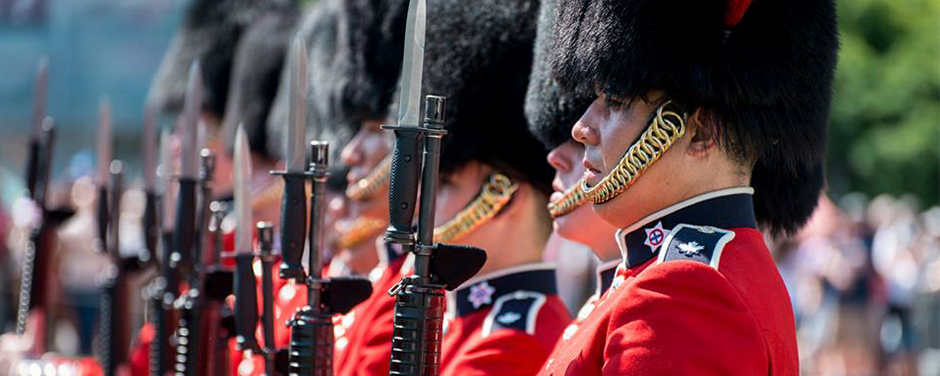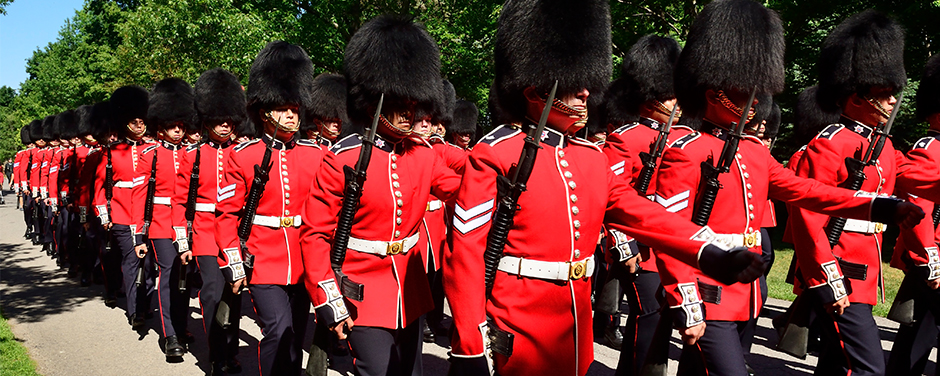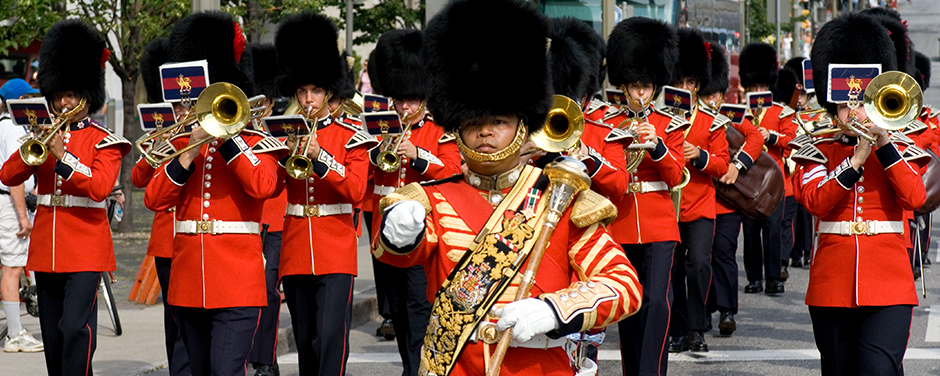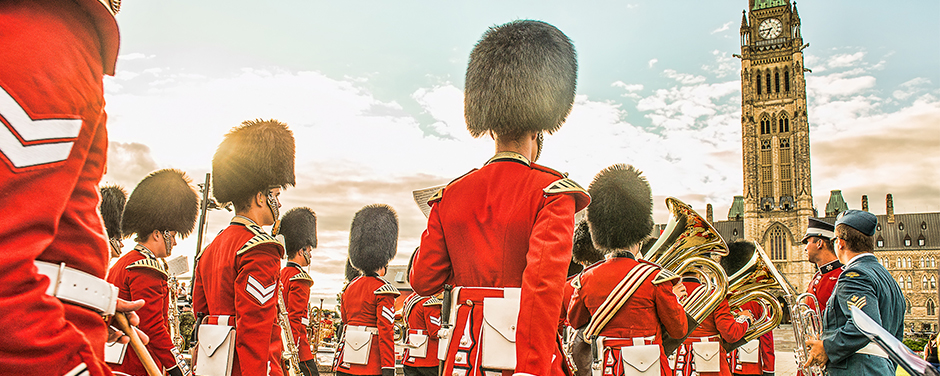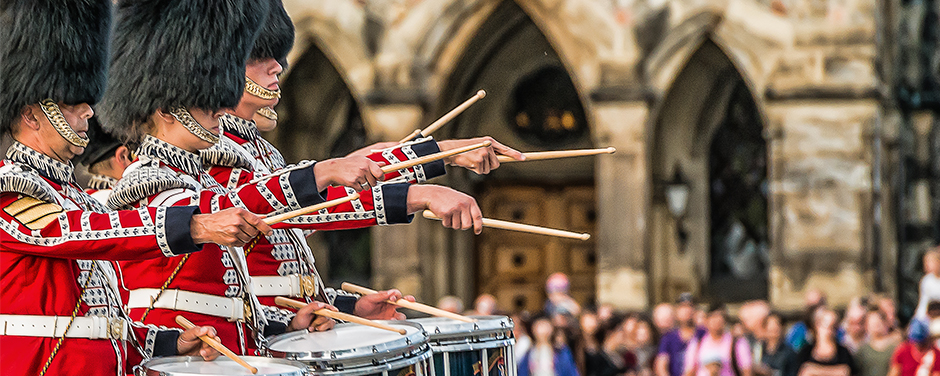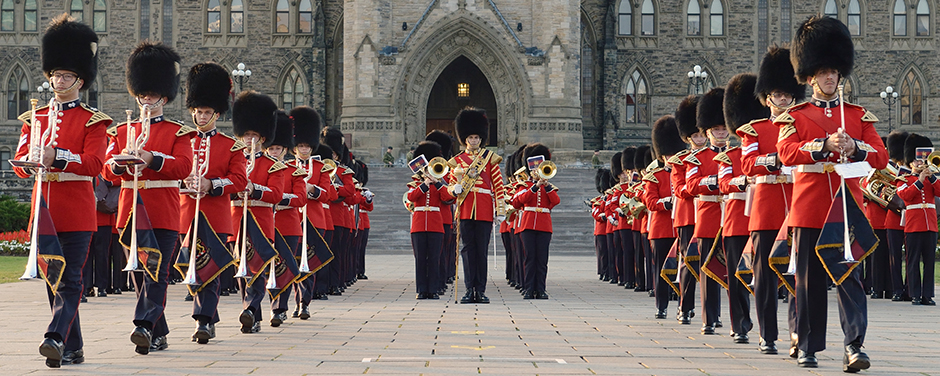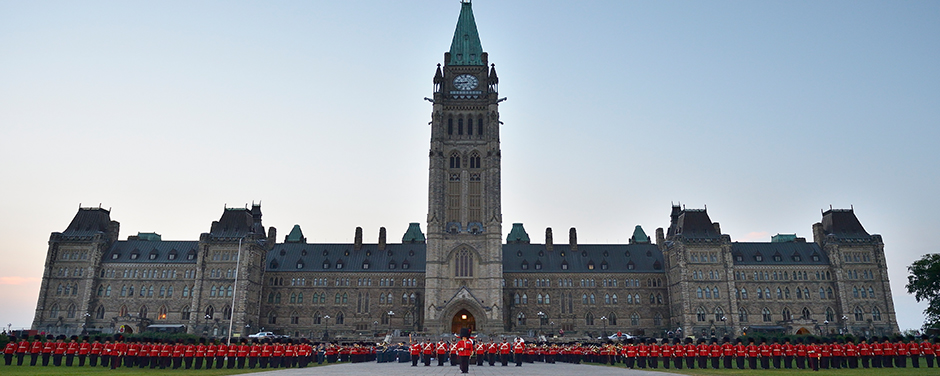Ceremonial Guard
Backgrounder
Ceremonial tasks in Ottawa began in 1959 with the inaugural Changing of the Guard Ceremony mounted for Her Majesty Queen Elizabeth II on Parliament Hill. The ceremony is centuries old and is still performed today. The Canadian Guards Regiment, a regular army infantry unit made up of four battalions with strong affiliations to the British Brigade of Guards conducted the first performance. The Canadian Guards carried-out public duties in the Nation’s capital until the unit was reduced to nil-strength in 1970.
In 1971, the responsibility for the Changing of the Guard ceremony fell to two army reserve regiments – the Canadian Grenadier Guards (CGG) and the Governor General’s Foot Guards (GGFG). Both units contributed a company of infantry soldiers for public duties throughout the summer months.
In 1980, the Ceremonial Guard was created to plan, prepare and execute the prestigious task of public duties in the National Capital Region during the summer. This new unit retained the traditional ties to the Guards who performed the parade the previous decade - the CGG and GGFG. The uniforms of these regiments can still been seen today and consist of scarlet tunics and bearskin caps that represent Canada’s Household troops; a cogent symbol of Canada’s relationship to the monarchy and one of Ottawa’s most treasured icons. In 2016, the Ceremonial Guard ceased to be an independent unit and was reformed as a sub-unit within the GGFG. Further, Ceremonial Guard has become a summer task which is force generated from across the Canadian Army, and consists of members of both the Regular and the Primary Reserve Forces.
Currently serving members in the Canadian Armed Forces (CAF) who are interested in joining the Ceremonial Guard for public duties should contact their chain of command. Civilian musicians who want to join the Band of the Ceremonial Guard should contact their nearest recruiting centre.
Return of the Changing of the Gaurd
The changing of the gaurd parade will return to Parliament Hill for the 2025 summer public duties season. From July 1st to August 20th, the Ceremonial Guard will conduct the parade daily at 10:00 AM on Parliament Hill. The full parade will take place on Wednesdays, Thursdays, Fridays and weekends, with the band only performing on Mondays and Tuesdays. The Band will lead the New Guard from Cartier Square Drill Hall to Parliament Hill marching along Laurier, Elgin and Wellington streets and arriving on Parliament Hill at 10:00 AM where it will relieve the Old Guard. On Canada Day local road closures will permit public foot traffic only and the Ceremonial Guard will march on and off parade within the Parliament Hill precinct only. From 13 to 20 August the majority of the Ceremonial Guard’s personnel will have departed Ottawa to participate in a planned military field exercise, leaving the band only to perform during this latter period. Members of the public may view the Guard at any point along its route or access Parliament Hill to watch the changing of the guard parade. Some local traffic disruption for motorists will occur between 09:45 and 10:00 hrs and again between 10:35 and 10:50 AM with the Ottawa Police Service directing motorists as required.
Ceremonial Guard uniforms
The members of the Ceremonial Guard are instantly recognizable in their distinctive scarlet tunics and bearskin caps.
Although they come from many units across Canada, members of the Guard continue to uphold the traditions of two of Canada’s finest regiments - the GGFG of Ottawa, and the CGG of Montreal.
Both regiments wear the black bearskin cap which was first adopted as a battle honour by the British First Regiment of Foot Guards following their defeat of Napoleon’s Grenadier Regiments of the Old Guard at the Battle of Waterloo in 1815. Upon their return to Britain, the First Foot Guards were subsequently renamed the “Grenadier Guards” in honour of their glorious victory over the French. By 1831, all British Foot Guards regiments were issued with the bearskin headdress which was designed to make a soldier appear taller and more intimidating.
When the GGFG were formed in 1872 to support regal functions in the nation’s capital, they were authorized to wear the uniform of their allied regiment – the Coldstream Guards. This is where the Canadian tradition of the bearskin cap draws its initial inspiration.
Today, the GGFG and the CGG are easily distinguishable by the coloured plumes on their bearskin caps: red for the GGFG and white for the CGG.
Ceremonial Guard – Preparation and Training
Members of the Ceremonial Guard must be physically fit in order to participate in the training and execution of ceremonial tasks as they are rigorous and demanding.
Upon arrival in Ottawa, the guards undergo intense physical, ceremonial and musical training leading up to the commencement of Public Duties. Countless hours are devoted to foot and weapons drill, uniform upkeep, parade rehearsals and physical conditioning.
